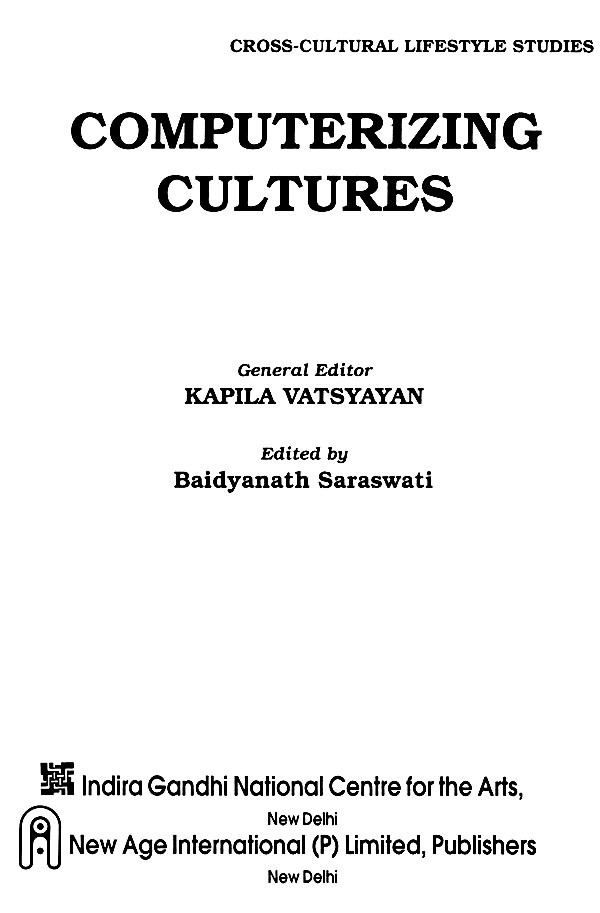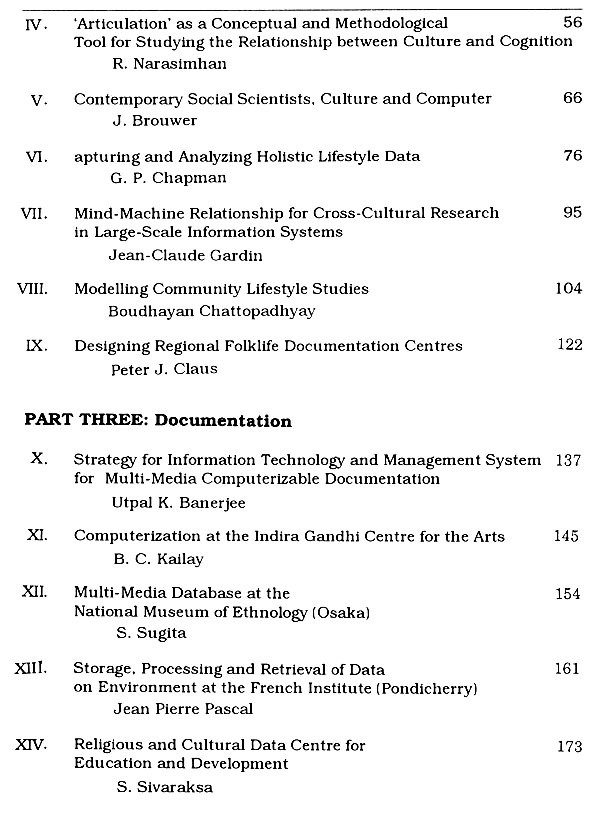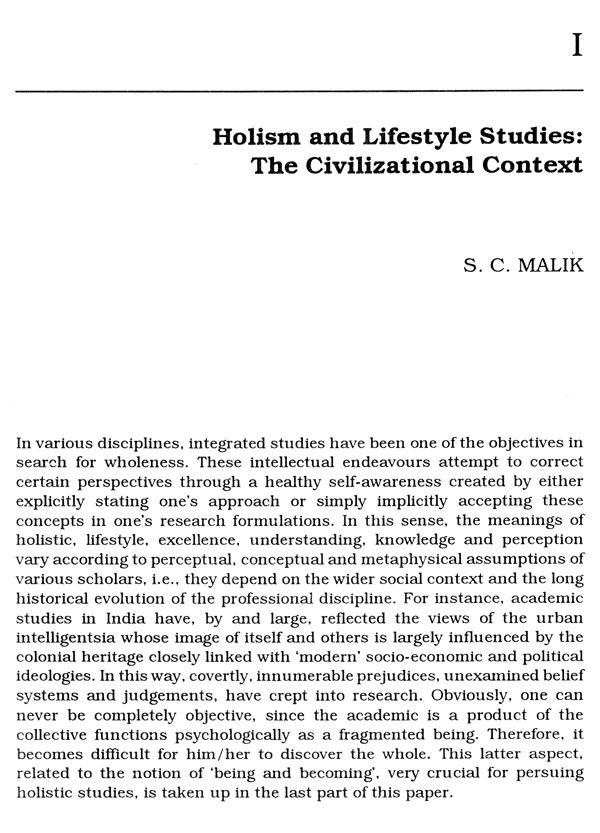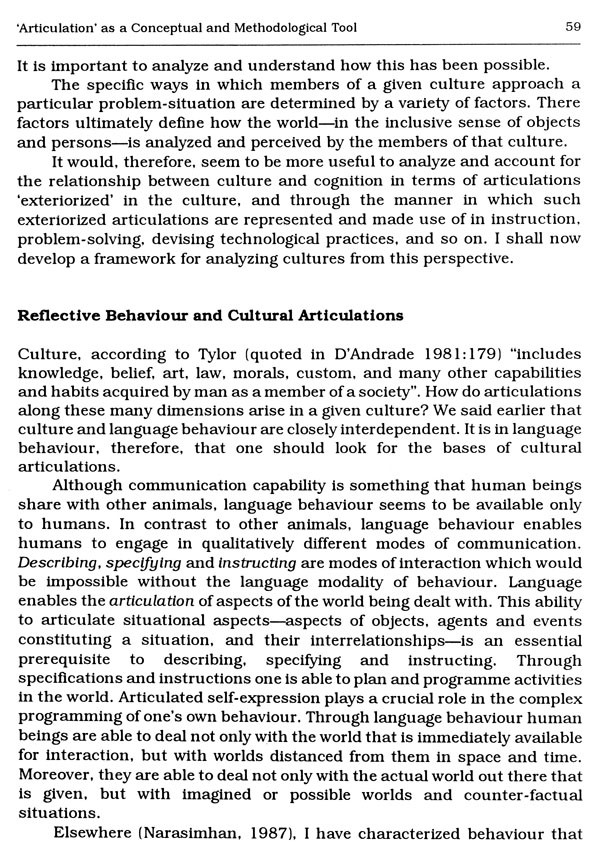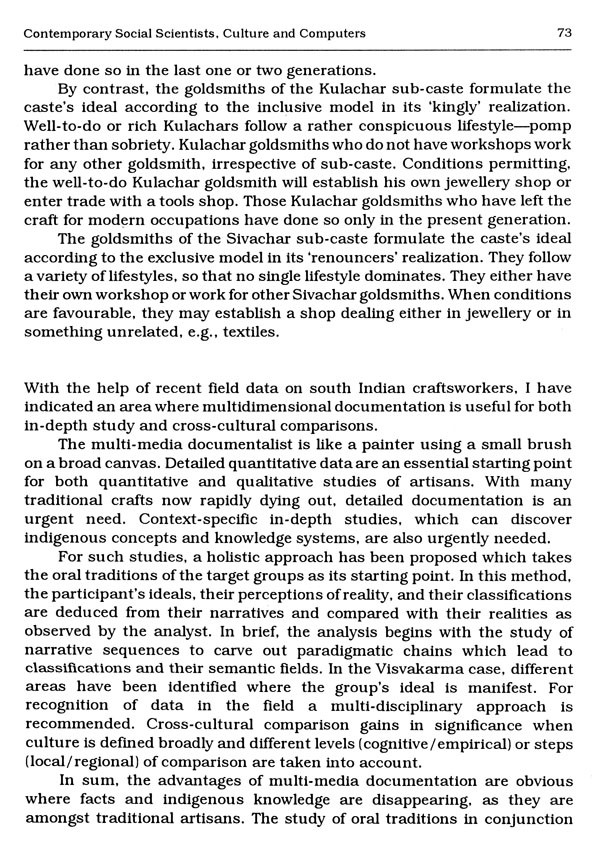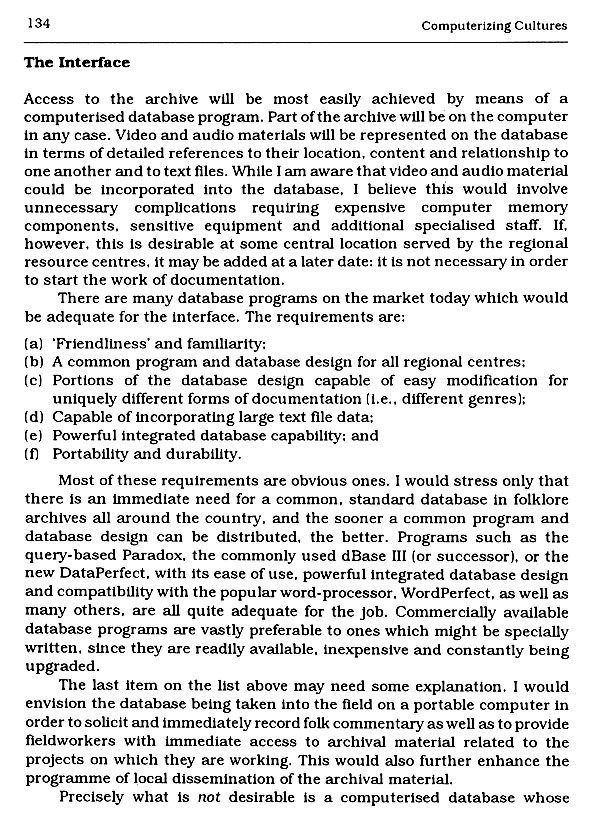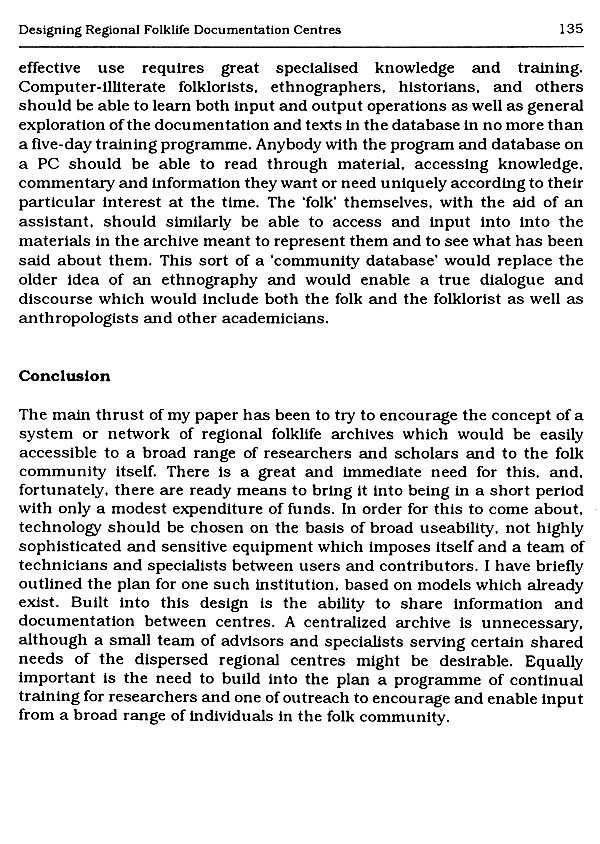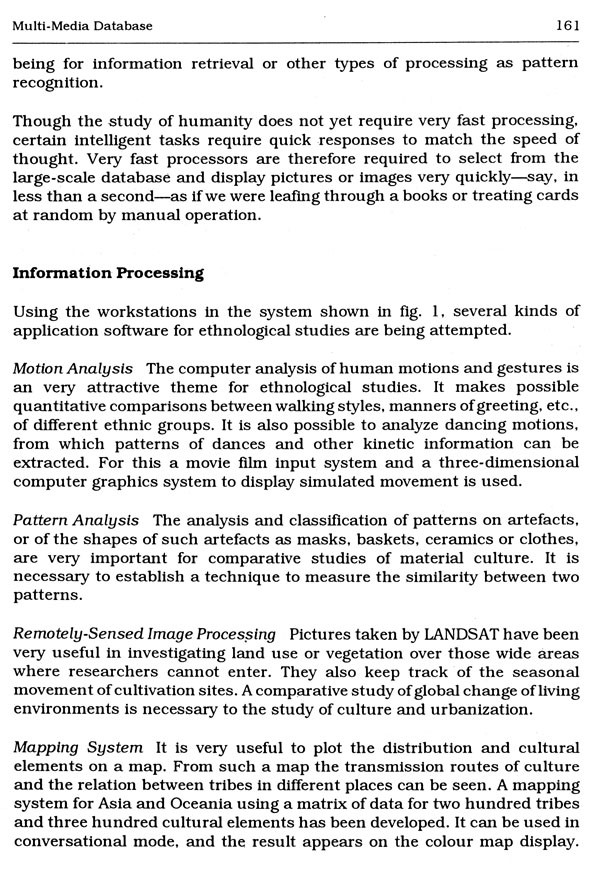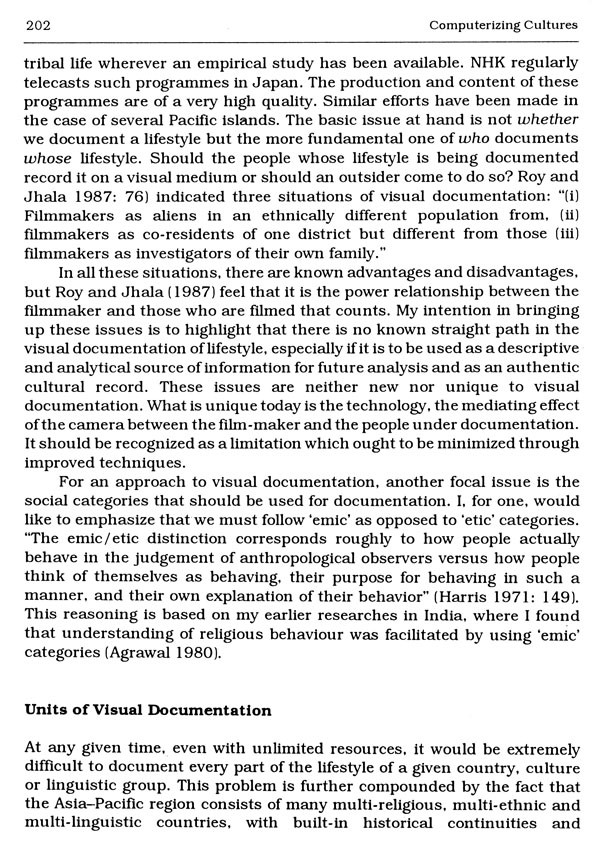
Computerizing Cultures (An Old and Rare Book)
Book Specification
| Item Code: | UAT378 |
| Author: | Baidyanath Saraswati |
| Publisher: | Indira Gandhi National Center for the Arts |
| Language: | English |
| Edition: | 1995 |
| ISBN: | 9788122408249 |
| Pages: | 262 |
| Cover: | HARDCOVER |
| Other Details | 10.00 X 7.50 inch |
| Weight | 740 gm |
Book Description
This book is a part of the proceedings of a UNESCO-workshop, "Cross Cultural lifestyle Stud ies with Multi-media Computerizable Documentation," held at the IGNCA in New Delhi. The essays here collected deal with theoretical and technical issues concerning documentation and computerization of cultural data.
The authors of this brilliant book have tried to introduce new concepts and appropriate tech niques capable of comprehending the multi-di mensional configuration of cultures. Reflective approach has been illustrated, emphasizing indigenous categories and taking a multiplicity of view points.
Cognizance of ideological and methodological problems in man-computer interface is admirably demonstrated by several contributors, taking into account a comprehensive view of cultural data on India, Pakistan, Thailand, Indonesia and Japan. the computer scientists and technical experts have provided alluring illustrations of the efficacy of hardware/software in carrying out multi-media computerizable documentation.
This book is first of its kind, technical and scholarly, and is a must for those engaged in documentation and computerization of cultural materials.
This book is a part of the proceedings of UNESCO workshop, "Cross-cultural Lifestyle Studies with Multi-media Computerizable Documentation", held at the IGNCA in New Delhi. The essays here collected form the text of an exemplary model for cross-cultural lifestyle studies.
The central concern of the authors of this book is to evolve a holistic approach to lifestyle studies, the distinguishing features of which is to look for interacting factors in human cultures. The book demonstrats through case studies that aspects such as economic pursuit, health, pilgrimage, music, religious images and ritual can be taken as an entry point to study creative life and configuration of styles of traditional cultures.
The book opens the way to a new methodology of lifestyle studies. The materials presented here are of great interest and value to anthropologists, folklorists, ethno-archaeologists and art-historians.
The Indira Gandhi National Centre for the Arts (IGNCA) has been identified as a nodal agency for developing data bases for South and South-East Asian art and cultural heritage and lifestyles through the application of modern infor mation technologies for standardization, exchange and dissemination of data through the development of integrated regional referral data bases and infor mation systems for storage, retrieval and dissemination.
In January 1989, we organized a five-day international workshop on Cross-Cultural Lifestyle Studies with Multi-media Compu-terizable Documentation under the aegis of UNESCO. Among the participants there were some forty distinguished anthropologists, archaeologists, art historians, economists, historians of science and technology, and specialists in computer science from Bangladesh. France, India, Indonesia, Japan, Pakistan, Thailand, UK. and U.S.A.
A deliberation on a theme of this kind by a body of experts in various disciplines must necessarily be immensely exciting-trying at times-to attempt to digest the wealth of theoretical constructs and technical details. There are three essential components of the theme of the workshop the comparative method, the concept of culture, and the computerization of cultural materials. All these components were discussed at great length, centering around the cross-cultural lifestyle study.
All sciences have a commitment to the use of the comparative method. Anthropologists study and compare a wide range of human societies, the so-called primitive and civilized, in all parts of the world, to determine the common and the unique features of human behaviour. It is prodigious to talk about the biological evolution of man. but to provide a definitive concept of culture is extremely difficult. Also the usefulness of cross-cultural understanding is undeniable, but the application of the comparative method is contentious.
Can cross-cultural comparison be done objectively? What constitutes culture is life itself. If life is the key to the creating capacity of culture, then first of all we must look for human perception of all life-man, trees and plants. animals, birds and insects, and all that moves. The next step in understanding human culture is to examine the web of relationship between man and man, and man and environment, man's physical space, his universe. The third step eventually takes to knowledge system, the worldview, and all that refers to man's vertical dimension. Moving through these steps we have already gone across other cultures.
Until recently all theorists of culture used a special and much debated procedure known as comparative method. The origin of this method is traced to the eighteenth century zoologists and geologists who studied large samples of extinct fossil forms of life. It is also associated with the establishment of linguistic science. Anthropologists extensively got it from paleontology and archaeology, and used it extensively to legitimize their study in terms of a scientific model. The underlying assumptions in 'comparative method' are (a) that cultural systems observable in the present bear differential degrees of resemblance to extinct cultures, and (b) that the older forms are relatively the simple ones. Good reasons exist for the choice of this method in tracing the origin and diffusion of cultures. The anthropologist E.B. Tylor was the founder of cross-cultural approach, as represented in the work of George P. Murdock Outline of Cultural Materials and adopted by the Human Relations Area File. The value of his approach is accepted not only in anthropology and archaeology but also in sociology. linguistics, art history, economic history and history of science and technology. Notwithstanding its usefulness the abuse of comparative method has been pointed out by several scholars (R.H. Lowie, for instance). There is no denying the fact that the main concern of this method has been to generalize in terms of cultural regularities or laws of this, especially without adequate Information. Another criticism is that it teems with subjective judgements naively passed on the basis of resemblance to or deviation from European standards. In order that these limitations are overcome all that is necessary is to develop qualitatively new concepts and appropriate techniques capable of comprehending the multi-dimensional configuration of cultures and traditions. Computerizable system of multifaceted pattern recognition could be one such important aid.
The essays here collected, which are based on UNESCO-sponsored workshop on 'Cross-cultural Lifestyle Studies with Multi-media Computerizable Documentation', held at the IGNCA. New Delhi on 9-13 January 1989. attempt to demonstrate that with the development in computer technology, cross-cultural studies have entered into a new phase. Alongside is the question: is computerization of culture as useful as one wishes it to be?
**Contents and Sample Pages**
